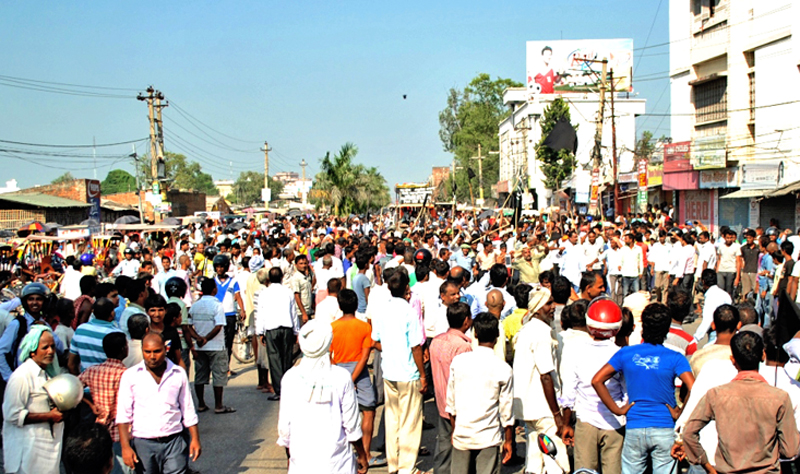Tarai protesters mull over marching on Kathmandu
Leaders are considering to mobilise up to 100,000 supporters in Kathmandu and a decision in this regard is likely within a week or two
Birgunj, January 26
Nepal’s constitutional crisis has entered a new and potentially dangerous stage as protesters, exhausted by a months-long blockade that has paralysed most of the border with India, weigh whether to change tactics and march on the capital.
Talks to accommodate the demands of southern lowlanders broke down last week. In renewed clashes, police shot dead three demonstrators, stoking fears of an escalation of violence in which more than 50 people have died.
Protesters from the minority Madhesi community now face a tough choice: either accept that provincial borders may be drawn that would divide them, or raise the stakes, by gathering in force in Kathmandu to wrest a unified homeland from the government.
“Look at the youths who have been protesting, at how many have been killed by bullets to the head or chest,” said Uday Kant Mishra, a member of the Federal Socialist Forum-Nepal, one of the groups in the United Democratic Madhesi Front that is spearheading the agitation.
“The rulers are showing us that this is a state that has no concern for the Madhesi community,” he told Reuters, adding that some Madhesis “may decide to pick up gun and fight back”.
India, meanwhile, has stepped up coordination
with Nepali customs to divert imports away from the fulcrum of the protests, the
border town of Birgunj. This has relieved pressure on Kathmandu, but failed to keep Madhesi leaders at the negotiating table.
People use backroads from the border in Nepal’s eastern districts of Jhapa, Morang and Dhanusha to bring in petrol and cooking oil. Such journeys have become routine as supplies remain scarce and expensive.
“People are tired,” Ram Chandra Sharma, a physics teacher in the city of Biratnagar told Reuters. “People have got to think about how they are going to eat.”
Protesters are still camped out on the Miteri Bridge that runs through no-man’s land from Birgunj to India, stopping goods from entering Nepal and sporadically battling police in and around the city.
Laxman Lal Karna, a senior leader of the Sadbhawana Party, another member of the UDMF, told Reuters the groups were discussing how best to ramp up the agitation.
Leaders were considering reoccupying major border crossings, Karna said, besides mobilising up to 100,000 supporters in Kathmandu, where anger at Prime Minister KP Oli’s government is growing over shortages of food and fuel.
A decision was likely
within a week or two, he added. But it was unclear if such large numbers of people could surmount Nepal’s severe transport disruptions to reach the capital.
The number of protesters sleeping at the Miteri Bridge has meanwhile dropped to around 30, because of sharpening winter cold.
In the bustling city centre of Birgunj, most shops were open, as jeeps and buses once again trickle north to Kathmandu.
“We know the blockade is affecting people’s lives,” said Jagat Narayan Prasad Yadav, a UDMF leader. “But unless we can put pressure on the leaders in Kathmandu, we will never achieve full rights for our community.”






